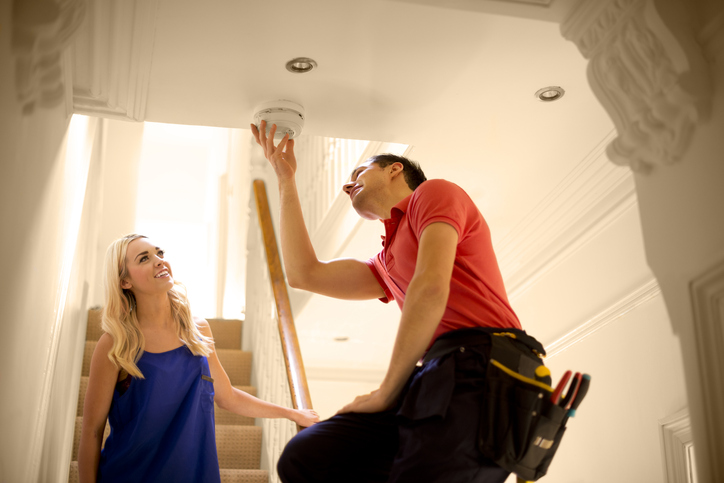You may have heard the news that the laws around fire alarms in homes in Scotland are changing, and it’s happening now. Despite the legislation being introduced in 2019 following the Grenfell Tower disaster in London, it has been delayed until now. It will make Scotland the first place in the UK to enforce the new law that every home will be legally required to have interlinked smoke alarms.
What does interlinked mean?
Basically, if one alarm goes off, they all go off. This means that no matter where you are in the home, if a fire breaks out, the interlinked system will notify you immediately.
How can you make your home fire safe?
Follow the advice provided by the Scottish government:
If you are a homeowner, it’s your responsibility to make sure your home meets the new fire alarms standard.
By February 2022 every home will need to have:
- 1 smoke alarm in the room you spend most of the day, usually your living room
- 1 smoke alarm in every circulation space on each storey, such as hallways and landings
- 1 heat alarm in the kitchen
All smoke and heat alarms should be mounted on the ceiling and be interlinked. Check the manufacturers guidance on each alarm for instructions on where the alarm should be placed.
If you have a carbon-fuelled appliance, like a boiler, fire, heater, or flue you must also have a carbon monoxide detector. This does not need to be linked to the fire alarms. Gas cookers and hobs do not need a carbon monoxide detector.
I live in a 3-bedroom, 2 storey house, what do I need?
- 3 linked smoke alarms:
- on the upstairs landing
- in the downstairs hall
- in the living room
- 1 linked heat alarm in the kitchen
- 1 carbon monoxide alarm in any room where you have a carbon-fuelled appliance like a boiler or wood-burning fireplace
I live in a 1-bedroom flat, what do I need?
- 2 linked smoke alarms:
- in the hall
- in the living room
- 1 linked heat alarm in the kitchen
- 1 carbon monoxide alarm in any room where you have a carbon-fuelled appliance like a boiler or wood-burning fireplace
If you have an open plan living room and kitchen you only need to have 1 alarm in this space, and it should be a heat alarm.
What type of alarm will I need?
There are 2 types of interlinked fire alarms that meet the new rules:
- sealed battery alarms – which should be tamper-proof long-life (which can be up to 10 years) batteries. You can fit these alarms yourself.
- mains-wired alarms – these are cheaper than tamper-proof long-life battery alarms but should be installed by a qualified electrician. These should be replaced every 10 years.
Both types of alarm are interlinked by radio frequency without the need for Wi-Fi.
If the carbon monoxide alarm is battery operated, it must have a sealed battery for the duration of its lifespan, which may be up to 10 years.
Is there any financial support?
Two days before the new rules come into play, the Scottish government has announced an extra £500,000 to help vulnerable people install new or update existing alarm systems, doubling the initial funding. To access this funding, you can contact Care and Repair Scotland who have been granted the funding to help offer advice and assistance to help homeowners repair, improve or adapt their homes. To be eligible for support from Care and Repair, people must live and own their own home in a council tax banding A-C. They must be of state pension age and receiving Pension Credit or have a disability and be in a support group for Employment and Support Allowance.
I’m not ready, what do I do?
According to STV news, just over half of Scots are prepared for the new law, although 57% believed there has not been enough information about the changes. Although it is now a legal requirement from 1st February, ministers have said that people would not be penalised if they needed more time to install new alarms.
But the sooner you implement the changes the better. For all the information around the new law and to ensure your home is fire-safe, you can visit https://www.mygov.scot/home-fire-safety.



















